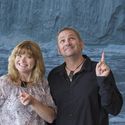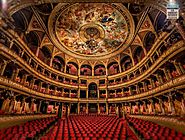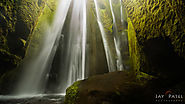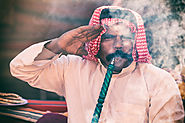-
About
- About Listly
- Community & Support
- Howto
- Chrome Extension
- Bookmarklet
- WordPress Plugin
- Listly Premium
- Privacy
- Terms
- DMCA Copyright
- © 2010-2025 Boomy Labs


 theplanetd
theplanetd
Listly by theplanetd
Ever since I received my first camera, the Canon AE1, when I was 13, I have been drawn to photography. There was something special about being able to capture a moment in time and freeze it right there on film. My infatuation with imagery continued as I went into moving pictures in my 20’s and has culminated to where I am now, a full time travel photographer.
Photography continues to energize me each day. I am constantly inspired by not only the world around me but also by the talented individuals that make
Source: http://theplanetd.com/photography-tips-from-the-best-travel-photographers-in-the-world/

“Don’t forget the importance of passion within photography. I feel that many aspiring photographers get so wrapped up in landing the next job, that they forget the need to pursue personal projects that they are passionate about from time to time. If you aren’t trying to reconnect with the passion that got you into this artistic median to begin with, you might find that you have lost it by the time you try to find it. When a photographer is truly in the moment, capturing something he loves…that can come off in his body of work and help elevate an image beyond what others might of captured.”Check out Colby’s awesome photography at Colby Brown Photography and follow him on Google+ and FacebookElia is another travel photographer that fuels my creativity and continues to produce stunning images day in and day out. As a fellow digital nomad who travels with his wife Naomi, I feel we are kind of kindred spirits. They both gave up their careers as we did to pursue their passion, and that really resonates with me. Not to mention his love for great coffee. Constantly pushing the envelope when it comes to HDR photography Elia not only comes up with increasingly creative ways to showcase popular destinations he also is incredibly generous in sharing how he goes about getting those stunning shots.

Regarding building the portfolio, I’m fortunate that I’ve been doing this for a few years now and I’ve been able to build a collection of diverse imagery. I like to remind people that you’re seeing the result of years of work and travel. With photography—and my philosophy of photography— the focus is always on quality over quantity. If I visit a place for a month and score one portfolio image out of it, it’s a huge success in my mind. Sometimes I’ve had to visit places for two or three years before I get that one image, but I will get that one image, eventually, as long as I keep trying.The bottom line is that photography is not a race. Take your time and build your portfolio slowly. Be concerned with the quality of the images and the quality of the experiences in the places you go. Don’t just try to tick locations off the list because, really, having 10 very powerful images is way more valuable than 50 mediocre ones.Follow his great photography and exploits on Blame the Monkey and on Google+ and FacebookI first met Ken years ago after following his stunning travel photography. It was when I was first interested in HDR and found Ken’s photos to have a perfect balance. Ken has a background in stock and lifestyle photography but has found his true passion in travel. Having not 1 but 2 National Geographic Cover images certainly helps. What I love about Ken’s photography is the unique way that he portrays a feeling in all of his images. A great travel photographer should be able to stir emotion with each frame and that is just what Ken does. He has been a great friend and educator to me throughout the years and one of the first ones I mention whenever I chat about great photography.Budapest Theatre by Ken Kaminesky

The best bit of advice I can give an aspiring travel photographer is to use a tripod. This one simple item can make a world of difference in the quality of your final image and open up new possibilities in terms of where and when you are able to capture quality, tack sharp images.Case in point, the image I provided to accompany this tip. Without a tripod I would not have even bothered showing up to attempt to get images of this quality and sharpness. The lighting is far too dim to be able to use a small aperture opening life at ƒ16 or ƒ22. I also would not have been able to do a vertical panorama such as I did in this shot. Shooting on a tripod with a tilt/shift lens allow?ed? me to stitch two photographs together in Photoshop and also allowed me to do a 5 exposure bracket in order to create the high dynamic range final image.Even without doing a panorama or HDR image, I still would want to be using a tripod for stability, considering the fact that a proper exposure under these lighting situations would likely give me a 10 to 20 second (or more) exposure at F-16 or so. There is no way to be able to handhold a camera with a heavy lens for this amount of time without incurring camera shake. The resulting blurry image will leave you frustrated and wishing you had listened to meDon’t skimp on your tripod and get something rickety or unreliable. Look at carbon fibre tripods (I use Induro) and a lightweight ball head. Keep the tripod as light as possible since you’ll be carrying it with you day in and day out.Happy shooting!You can find all of Ken’s Awesome images at Ken Kaminesky Photography and be sure to follow him on Facebook and Google+Another photographer I have been following for a while is Jay Patel. He and his wife Varina are accomplished landscape photographers, and my go to resource when it comes to photography education. Being able to capture great images is one thing but being able to teach how it is done is a whole other ball game. Jay and Varina have helped me elevate my photography over the years through their comprehensive e-books and willingness to share their knowledge with the masses. I simply love the way they capture a destination in their photos. Both have a unique style all their own.Gullfoss, Iceland by Jay Patel.

There are still places in Iceland where only the sheep wander… and even they only visit on a good day. My favorite thing about traveling with Varina, is that she is always ready to go explore these unknown places (even if it means pushing a few sheep out of the way). This waterfall is one such place. It is located inside the deep and narrow bowl of a canyon with a large opening overhead. The location presents a series of challenges – composition is difficult in the enclosed space, and light conditions are tough to handle because the lower part of the falls are in shade, while the sky overhead is very bright. To make matters worse, the falls produce copious amounts of mist, which coat your lens (and everything else) with dripping water faster than you can fire off a shot.We visited this location on a windy day just as the storm overhead was breaking up. The windy conditions and high volume of water made the canyon feel a bit like the inside of a washing machine. Thank goodness for waterproof boots! So, how did I manage to get this photo? I followed a simple workflow:I use the same workflow when shooting in rain or near sources of splashing water.Don’t forget to dry your camera thoroughly when you finish shooting in a place like this. We recommend carrying a waterproof cover for your camera (even a plastic bag will do the job) – but even with the cover on, you’re likely to find water in places you wish it wasn’t. We always carry a small, super-absorbent towel in our camera bags for situations like this.When our gear was dry and packed, Varina stood by the car, wringing out her hair. We hung our water-proof jackets in the car, draped our lens cloths and towels over the air vents, and turned up the heat so our pants could dry. A morning like that sure makes quick-dry pants feel like a luxury!Check out Jay’s full line of Photography E-Books and follow him on Google+ and FacebookI started following Michael over the past 2 years and was immediately drawn to his ability to connect with a subject through the lens and his stunning night photography. I have always said that travel is not just about the destination. It is the people that make a destination what it is. It is the heart and soul. Being able to translate that in a photograph is not so easy. To draw the viewer in and have them make a connection with a person is a special talent. This, in my opinion, is what Michael is best at. You just have to look at his photos here to see what I mean.
Talk to people. As many as you can. Walk the streets of this foreign land you find yourself in and just talk to people. Experience a life that may be a complete 180 degrees from your own. Everyone has an interesting story. Your job is to listen for it. And if you both feel comfortable, take their portrait. For the rest of your life, you will look back at that photograph and remember every detail of that person’s story. And you will always be reminded of why you fell in love with traveling. The people.One of the best conversations that I had ever had in my life was with a man who spoke no English at all. His name is Shaban, and he is a hookah man in the Wadi Rum desert in Jordan. One night, we spent 4 hours by a campfire, just me and him….sharing photos on our cell photos of our families and travels, trying to speak each other’s language, smoking shisha, and laughing. Lots and lots of laughing. We became friends, and teared up the next day when it was time to say goodbye…even though we never spoke a word of the same language to each other.You can follow Michael’s Adventures at Michael Bonocore Photography and Follow him on Facebook and Google+A huge thanks for to all these guys for taking time out of their busy schedules to share their knowledge. They’ve been a huge inspiration to me and I hope you check out their work yourself and let them inspire you too!
Get up early and stay up late. Light is the key to great photography. If you look at all the images above they would translate very differently if the light were different. After spending 15 years lighting big budget movies I can tell you light can make or break a scene. It is the same in travel photography. Getting up early for sunrise, like in the shot above, allowed me to get those muted pastel colours that would not otherwise be there at another time of day. It also allows you to make the most of your ND filters especially when you are looking for that motion effect in the water. Even if you are not a morning person make sure to explore a destination at sunset or magic hour (Which is after the sun sets but before it gets dark). It can give you a whole new perspective on a destination.Well there you have it. Tips from the pros and me about how you can become a better travel photographer. If you are looking to improve your travel photography make sure to follow all of these guys. It will be the best decision you have made today!
